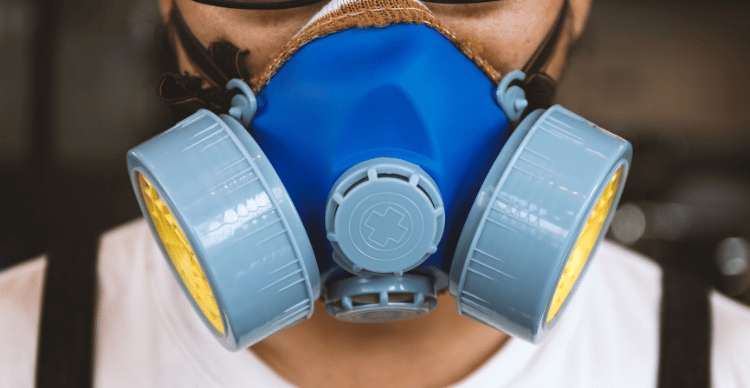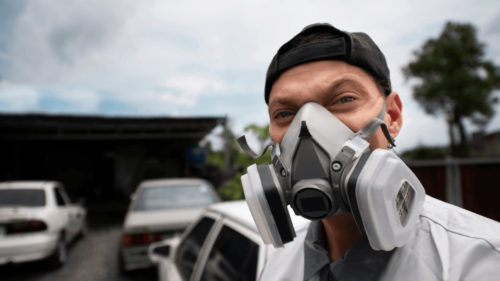In settings where air quality may pose health risks—from industrial workplaces to
environments contaminated by pathogens—a properly fitted respirator is essential.
While selecting the right respirator is crucial, understanding how to correctly fit and
wear it is equally important to ensure maximum protection. Many users are unaware
that a poor fit can significantly compromise the effectiveness of a respirator. In this
blog, we will guide you through the essential steps to achieve the perfect fit, ensuring
that your respirator works as intended to protect you from harmful airborne particles.
Types of Respirators
At GVS Malaysia, we offer a variety of respirators, each designed for specific
environments and protection levels. Understanding the different types available is
the first step towards ensuring you choose one that’s right for your needs:
- N95 Respirators: Ideal for environments where particles like dust, mists, and
fumes are present. These respirators filter out at least 95% of airborne
particles but are not resistant to oil. - Half-Mask Respirators: These cover the nose and mouth and are typically
used in environments with gases and vapours, combined with particulate
filters when needed. - Full-Face Respirators: Offering full face protection, these respirators protect
against gases, vapours, and particulates. They are essential in environments
where eye and respiratory protection is necessary.
Each type of respirator serves a unique purpose, and selecting the right one depends
on the specific hazards present in your environment. For more information on
selecting the appropriate respirator for your needs, visit GVS Malaysia.
Steps to Properly Fit a Respirator
Properly fitting a respirator is key to effective protection. Follow these essential
steps to ensure your respirator fits correctly:
Step 1: Choosing the Right Size and Style
● Select the Correct Size: Respirators come in various sizes. Ensure you choose
one that fits your face shape and size snugly without gaps.
● Right Style for the Job: Depending on the exposure and work environment,
select a style that provides adequate protection. Consult with experts at GVS
Malaysia if you’re unsure which style suits your needs best.
Step 2: Positioning the Respirator
● Place the Respirator: Hold the respirator in your hand with the nosepiece at
your fingertips, allowing the headbands to hang freely below your hand.
● Position on Face: Place the respirator over your nose and mouth and pull the
top strap over your head so it rests on the crown.
Step 3: Adjusting for Comfort and Seal
● Secure the Straps: Position the bottom strap around your neck and below
your ears. Do not crisscross the straps. If the respirator has a head cradle,
position it comfortably at the back of your head.
● Adjust for Fit: Pinch the metal nose clip lightly to fit the bridge of your nose.
Ensure there are no gaps around the edges.
Step 4: Seal Check
● Perform a Seal Check: Cover the front of the respirator with both hands
without pressing too hard on the seal. Breathe in or out sharply. You should
not feel air blowing around the edges. If you do, adjust the fit and try again.
● Always Check: Perform this check each time you wear the respirator to ensure
an optimal seal.
Tips for Wearing a Respirator
Wearing a respirator correctly is just as important as fitting it properly. Here are some
tips to ensure that you maintain optimal protection throughout the usage period:
Duration of Wear
● Limit Wear Time: Wearing a respirator for extended periods can be
uncomfortable. Take breaks if possible, especially during long shifts, to
reduce discomfort and fatigue.
● Replace Regularly: Follow manufacturer guidelines on how often to replace
your respirator or its filters, as particles and contaminants can clog the filter
over time, reducing its effectiveness.
Handling and Storage
● Proper Handling: Always handle the respirator by the straps to avoid
contaminating the part that covers your face. Wash your hands before and
after touching your respirator.
● Appropriate Storage: When not in use, store your respirator in a clean, dry
place away from contaminants. A sealed bag can help protect it from dust
and moisture.
Hygiene
● Face Hygiene: Keep your face clean before wearing a respirator, as oils and
makeup can degrade the material of the respirator, impacting its
effectiveness.
● Respirator Hygiene: Clean reusable respirators according to the
manufacturer’s instructions. For disposable models, do not attempt to wash
or reuse them as this can damage their structure and filtering capabilities.
By following these tips, you can ensure that your respirator remains effective and
comfortable to wear, helping to protect your health in environments where air quality
is compromised.
Common Mistakes to Avoid
When it comes to using respirators, certain common mistakes can compromise both
safety and comfort. Here are some key errors to be aware of and how to avoid them:
- Using a Damaged Respirator: Always inspect your respirator before use. If you
notice any tears, holes, or damaged parts (like the straps or seal), replace it
immediately. Using a damaged respirator can drastically reduce its
effectiveness. - Improper Seal Check: Skipping the seal check can lead to wearing a respirator
that isn’t properly sealed to your face. This mistake allows contaminated air to
bypass the filter, reducing the respirator’s protective capabilities. Always
perform a seal check after putting on the respirator. - Incorrect Strap Placement: Wearing the straps incorrectly can cause a poor fit
and an ineffective seal. Ensure straps are placed correctly as per instructions
and are not twisted or overlapped. - Wearing Facial Hair: Facial hair can prevent a good seal between the
respirator and your skin. Shave or trim facial hair where the respirator must
seal to ensure effectiveness. - Reusing Disposable Respirators: While some respirators are designed for
multiple uses, disposable respirators should not be reused. Continuous use
can lead to a build-up of contaminants and decreased filtering efficiency.
By being aware of these common errors and actively working to avoid them, you can
significantly increase the protective benefits of your respirator.
Conclusion
Respirators are a critical tool in protecting against airborne contaminants, whether in
industrial settings, healthcare environments, or areas affected by air pollution.
Properly fitting, wearing, and maintaining your respirator are crucial steps to ensure it
functions effectively, providing the necessary protection to keep you safe.
Remember, the effectiveness of a respirator is not just about the product itself but
also how well it fits and is maintained.
Are you ready to ensure your safety and that of your team with the right respiratory
protection? Visit GVS Malaysia to explore our range of respirators and find the
perfect fit for your needs. Don’t compromise on safety—get expert advice and
high-quality respirators that you can trust today.



